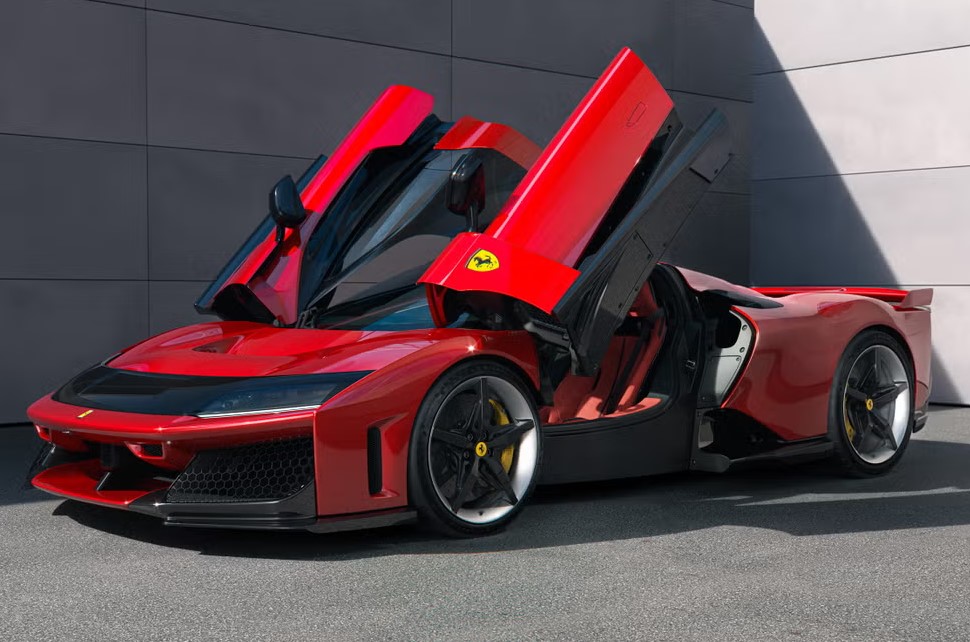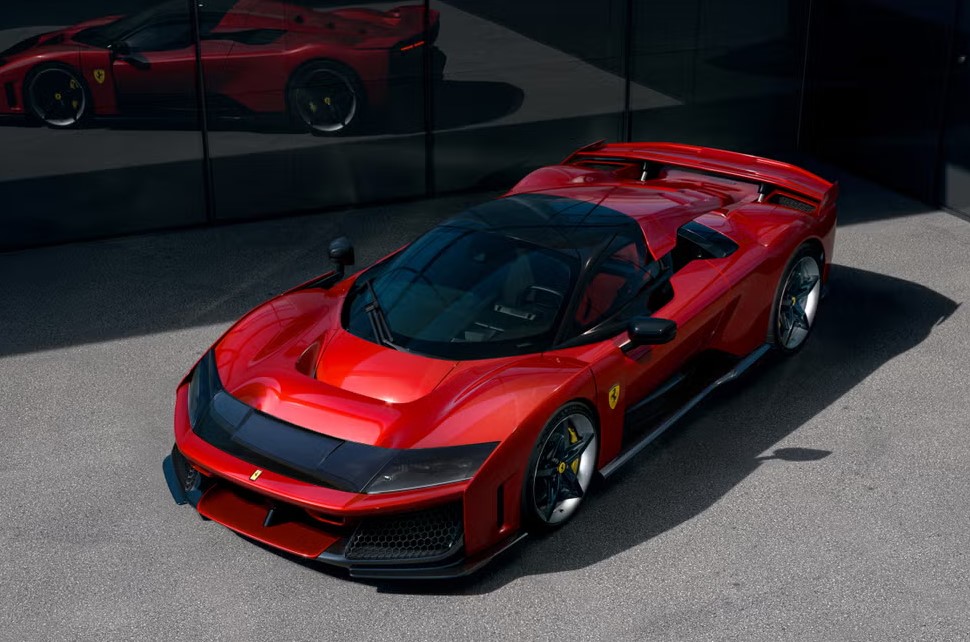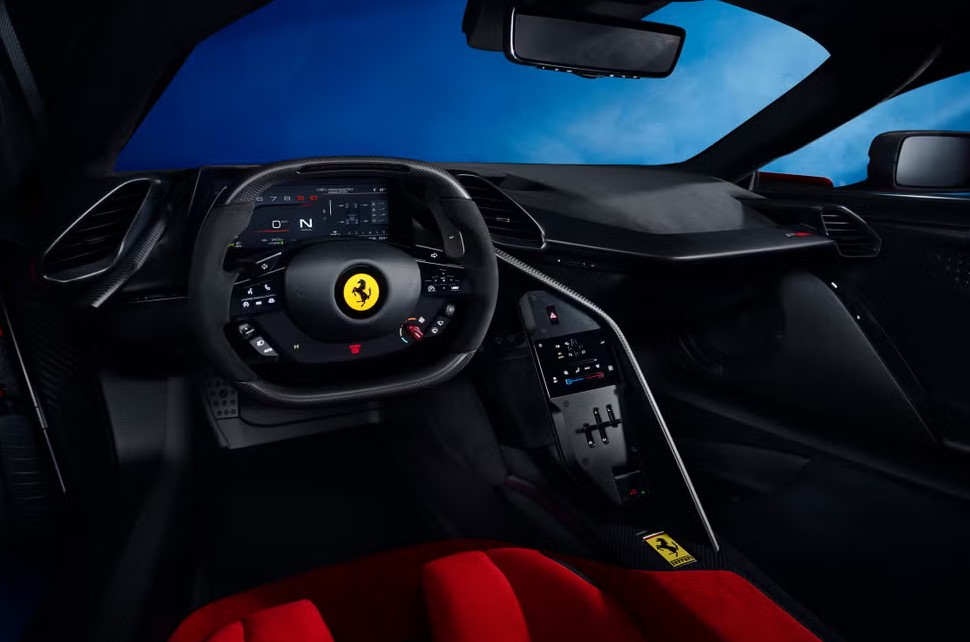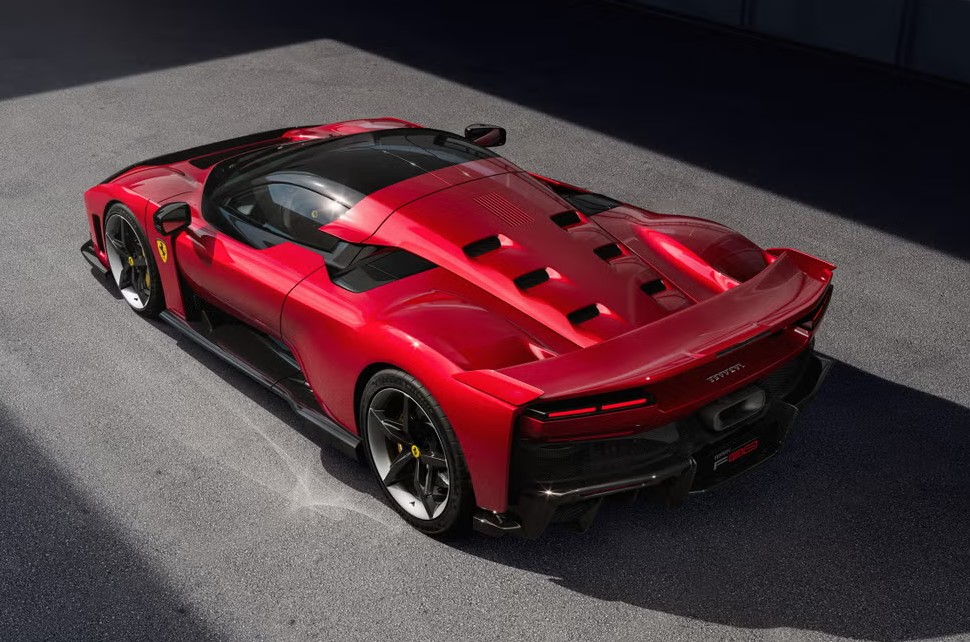2026 Ferrari F80 Specs, Review, Release Date – A new Ferrari flagship is introduced at least once every 10 years. Eleven years after the LaFerrari, Maranello’s next pride and pleasure is the Ferrari F80. Going back to the taxonomy the firm started with the 1987 Ferrari F40, the name is fitting and clearly indicates the hypercar’s place in the range.
Like each of Ferrari’s halo cars before it, the F80 is an example of how the firm uses all of its knowledge of motorsport to produce the ideal street car.
According to Ferrari, the 499P prototype, as won two Le Mans 24 Hours races, served as the basis for the F80’s engine, which includes a 3.0-liter, twin-turbo, 120-degree V6 with an additional electric motor on the forefront axle and second between the V6 and the eight-speed dual-clutch gearbox.
The last one is the MGU-K, a gadget that Formula 1 enthusiasts are used to hearing about. Its duties include supplying torque, igniting the engine, and accumulating energy to recharge the battery. 2026 Ferrari F80 Specs
2026 Ferrari F80 Redesign and Update Plan
Exterior & Interior
The driver is given the best seat in the house, despite the F80’s interior having two seats. The F80’s small, flat-sided steering wheel and little use of digital display gadgets indicate that its primary purpose is to be a driver’s car. Ferrari calls the F80 a 1+ rather than a two-seater in their marketing brochures. While the passenger seat, which is fixed to the car’s carbon-fiber tub therefore cannot be removed, is covered in black fabric and blends into the backdrop of photos, the F80’s bright red driver’s seat draws attention to its driver-centric design.
There isn’t an infotainment display inside the F80, at least not in the traditional sense. The digital gauge cluster, which is operated by buttons on the steering wheel, serves as the primary display for practically everything in the car. A second, smaller display in the center console is used solely for climate control. We do not expect the F80 to offer Wi-Fi, voice assistants, or in-car gaming, however all the details are yet unclear.
Additionally, Ferrari estimated that at 155 mph, the F80’s saddle bags produced about 2,315 pounds of downforce. It took a lot of aerodynamic sorcery to achieve this impressive quantity, which is rarely seen with a road car (though the new McLaren W1 gets close).
To optimize airflow over and below the vehicle, Ferrari’s race car innovations—such as S-ducts based off the 499P and a front barge board design—were once again used up front. The vehicle’s flexible suspension system, which raises and lowers the car as necessary while driving to further ensure adequate ventilation, is another consideration.
The rear is where the most obvious F80-specific upgrades can be found. The aero show’s primary feature is its rear wing system, which can change the angle of attack by up to 11 degrees based on what you’re doing on the track and deploy more than 10 inches in height. The massive back diffuser, which does a lot of downforce work on its own, is also included in this.
You need the wing to provide a lot of downforce? You got it immediately. Braking at full speed and heading into a terrible hairpin or anything? It will take care of itself, the wing. But if you don’t want anything to drag, the Low Drag feature will take over. At high speeds, they all cooperate with the adaptive suspension to provide you the ability to make quick decisions that will keep the F80 in a stable tarmac position at all times.
Boost Optimization, an incredible piece of technology that basically “records” the track where you’re traveling and then decides for you which areas of the circuit might need a little additional boost, is one of the Ferrari F80’s most astounding features. You must first set up the function and then do a recon loop of the circuit in order for the car to map it. That’s all.
After that, drive around the course as you usually would, but with the extra advantage that the car will take you anywhere it pleases. It may be employed in either Performance mode, which more uniformly distributes the boost power, or Qualify mode, which essentially activates Boost’s Beast Mode and improves each boost zone. We can’t wait to test this unique ability.
With the F80, Ferrari also attempted to enhance cooling. Everywhere you look, you’ll see ducts, intakes, inlets, and louvers designed to keep the car’s electrical system and engine from overheating.
Another significant issue is weight, or the lack of it. Experts from Ferrari looked at almost every part of the car to identify places where they might save money. Given its size, frightening look, and numerous electrical components, Ferrari’s dry weight statement of 3,362 pounds is amazing (adjust a few hundred pounds for gasoline, oil, and coolant to achieve a true curb weight).
The F80’s rear upper suspension arms, which are also a first for a Ferrari road car and are borderline works of art that were 3D printed in-house, are among the most inventive weight-saving techniques. The car relied extensively on carbon fiber, titanium, and aluminum, as one might expect. 2026 Ferrari F80 Specs
2026 Ferrari F80 Specs
Engine & Performance
While the V6 generates 900 horsepower, 626 lb-ft of torque, and a redline of 9,200 rpm, the electric motors contribute an additional 300 horsepower and allow torque vectoring up front. The F80 can accelerate from a halt to 62 mph in 2.1 seconds and achieve a peak speed of electronically controlled 217 mph.
The V6 option will surely disappoint some individuals because the LaFerrari has twice as many cylinders as the V6. But hybrid technology has advanced much since then, and its V6 is closely linked to Formula One cars and Ferrari’s endurance racing program.
One element of these vehicles is power. Despite its 3,362 pound weight, the F80 produces an amazing 2,314 pounds of downforce thanks to an active rear wing that is secretly massive—though you might not really notice it until it’s fully deployed—and a cooling feature Ferrari calls the “S-Duct,” which directs air from underneath the front end and launches it over the canopy.
Ferrari’s Formula 1 racing team supplied the technology for the F80’s plug-in hybrid drivetrain, which produces an incredible 1184 horsepower. A mid-mounted twin-turbo 3.0-liter V-6 engine with three electric motors generates that power, and acceleration ought to be nothing short of amazing.
The F80 also has all-wheel drive, with two electric motors feeding the front wheels. Standard features include an active suspension system that uses four 48-volt electric motors to modulate the damper stiffness at all four corners and an eight-speed dual-clutch automatic gearbox. As soon as we get the chance to test drive the F80, we’ll update this page with our driving impressions and the results of our instrumented testing. 2026 Ferrari F80 Specs
2026 Ferrari F80 Safety Features
The F80 contains several driver-assistance features, like as adaptive speed control, automated braking for emergencies, lane-keeping assistance, including automatic high-beam headlights, despite the likelihood that a car with this degree of performance focus wouldn’t have any.
To find out more about the F80’s crash-test results, visit the websites of the National Highway Traffic Safety Administration (NHTSA) and the Insurance Institute for Highway Safety (IIHS). Crucial components of safety include:
- Standard automated emergency braking
- Standard adaptive cruise control
- Standard lane-departure warning
- Lane-keeping assist
2026 Ferrari F80 Release Date & Price
The starting price of the 2026 Ferrari F80 is $3,100,000. Even though Ferrari has not revealed the F80’s price or production number, we have strong cause to believe that it will be expensive and produced in tiny quantities. As soon as we have additional details regarding the F80’s cost and equipment options, we’ll update this site.
Conclusion
The screeching V-12 engine is replaced with a twin-turbo V-6 plug-in hybrid powertrain in Ferrari’s new performance flagship model, the F80, despite its unique design. The F80 was developed by the company’s Formula 1 racing team and is regarded as the heir of iconic Ferrari automobiles like the LaFerrari and the 288 GTO.
According to reports, the F80’s plug-in hybrid drivetrain can go from zero to sixty miles per hour in as little as 2.2 seconds thanks to its 1184 horsepower. Active aerodynamic elements, an eight-speed dual-clutch automatic gearbox, and an active suspension system have all been used to improve the F80’s performance.
Note: The details included in this blog post are derived from pre-release material that was accessible when the article was written. If you want the latest information, you should check official sources or call your nearest dealership.




